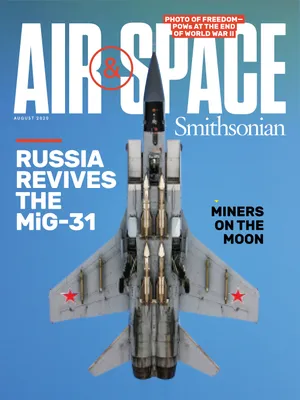At Some Airports, a Plague of Locusts is a Real Thing
Bug, meet windshield.
:focal(1578x763:1579x764)/https://tf-cmsv2-smithsonianmag-media.s3.amazonaws.com/filer/cf/c5/cfc57c14-4584-4876-8cbf-f0981d4b8700/32a_aug2020_locustscreditethiopianairlines_live.jpg)
Locusts, the scourge of farmers for millennia, also pose a threat to aviation worldwide. They fly as high as 3,000 feet and in swarms of up to 50 million, according to the Australian Civil Aviation Safety Authority.
Like drones, birds, and other creatures sharing the sky with airliners, locusts typically pose the greatest danger to aircraft that are landing or taking off. Last January, an Ethiopian Airlines 737‑700 was forced to make an emergency landing after it flew into a swarm: Locusts got trapped in the engines and splattered across the cockpit window, reducing visibility.
Now India, which is seeing its worst recorded locust activity in 20 years, has issued guidelines to pilots on how to cope with the crisis. “Use of wipers at times may cause the smear to spread even more; pilots should consider this aspect prior to opting to use wipers to remove locusts from the windshield,” advises the Directorate General of Civil Aviation. Another risk is blockage of pitot tubes, which can cause “unreliable air speed” readings.
The agency also warns ground crews that swarms can potentially damage equipment aboard parked aircraft and recommends that all air inlets should be covered. And the best time to fly? Locusts don’t swarm at night.
/https://tf-cmsv2-smithsonianmag-media.s3.amazonaws.com/accounts/headshot/mark-strauss-240.jpg)

/https://tf-cmsv2-smithsonianmag-media.s3.amazonaws.com/accounts/headshot/mark-strauss-240.jpg)